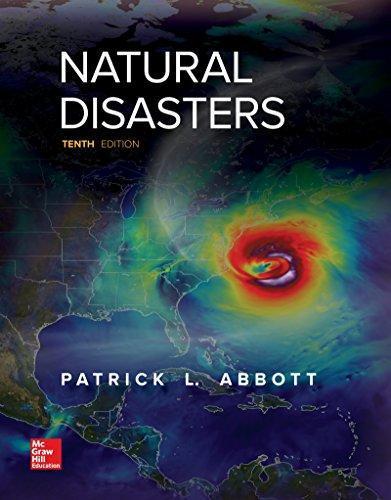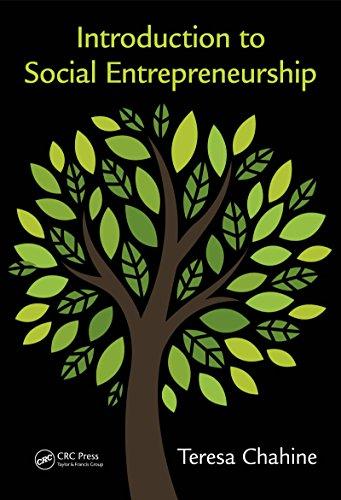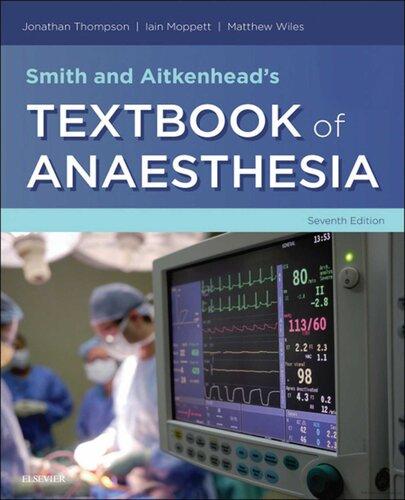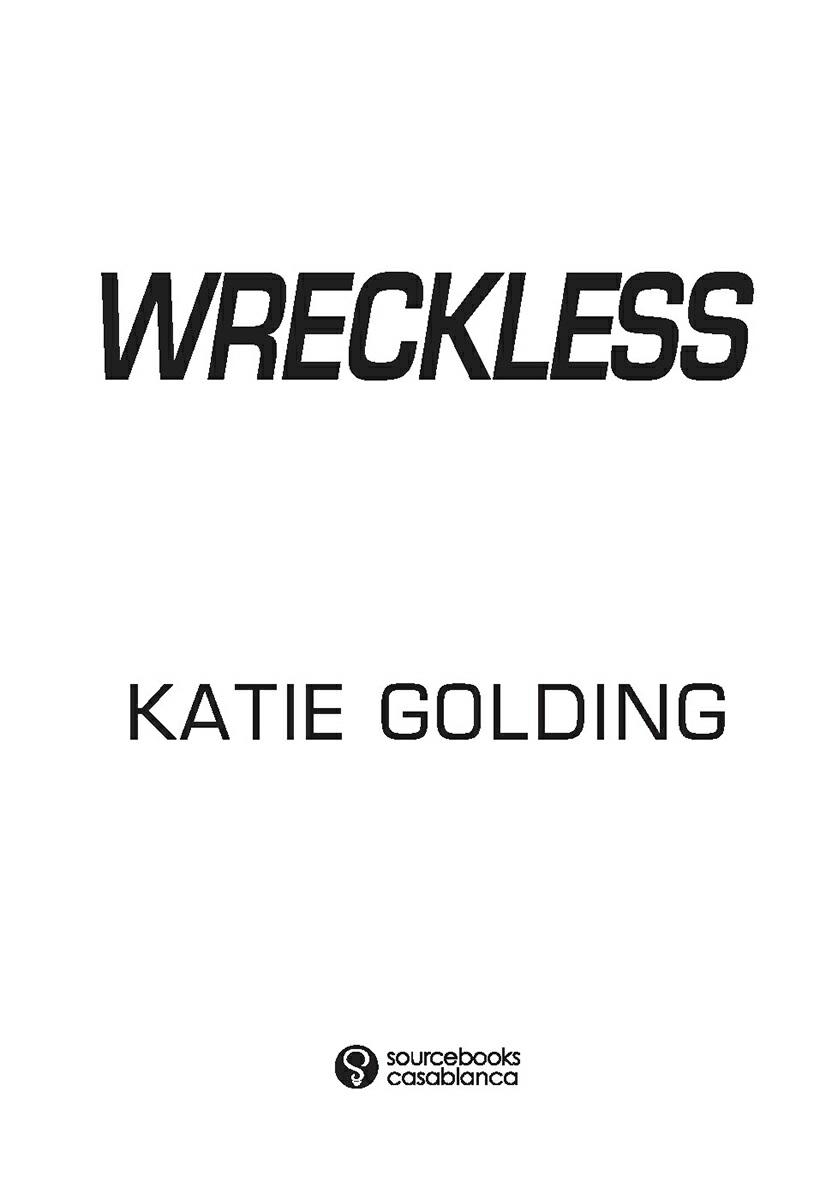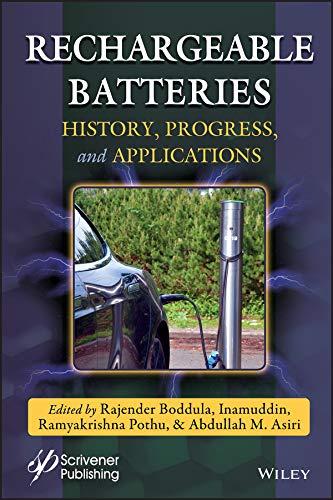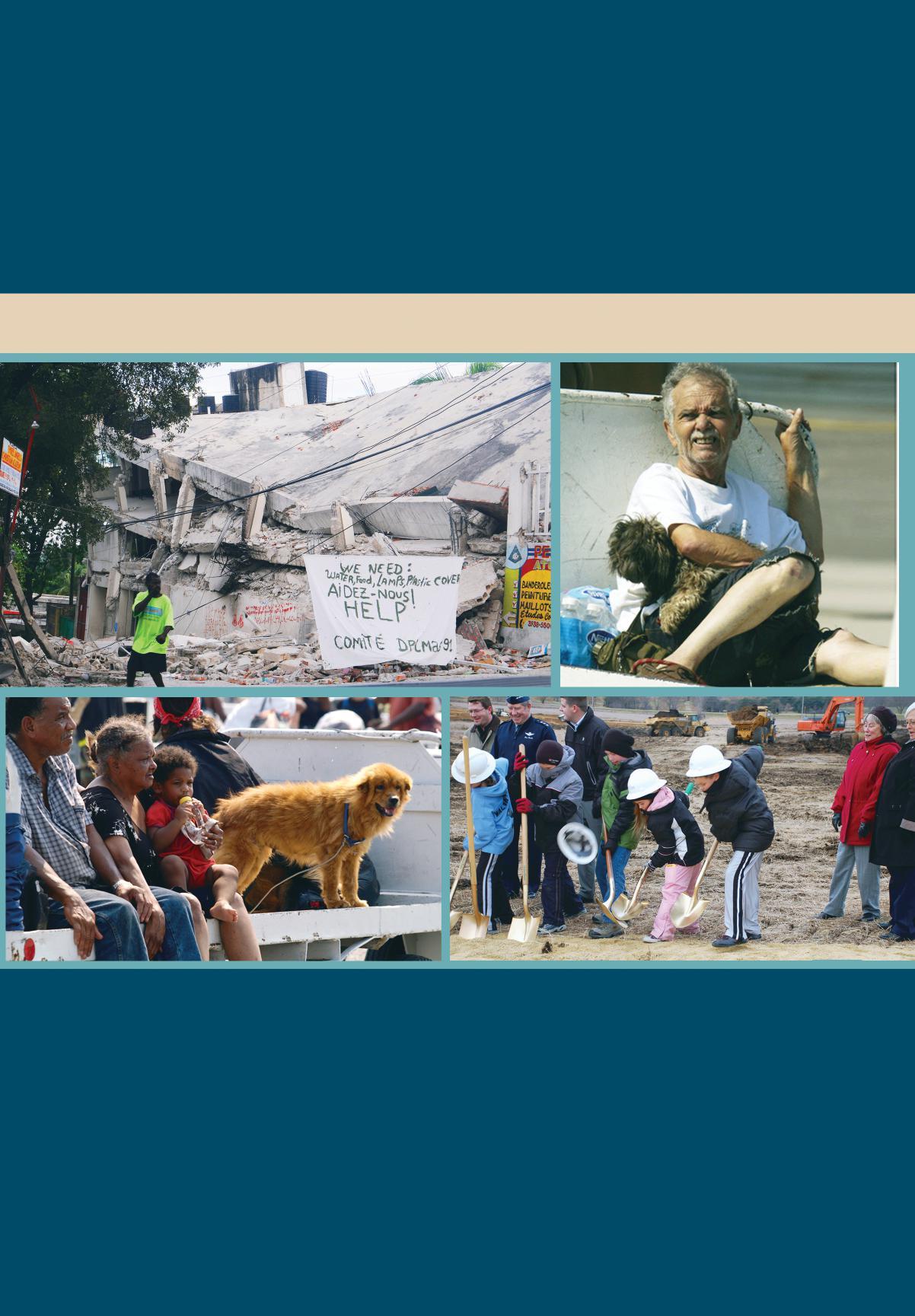Acknowledgments
MARY FRAN MYERS SCHOLARSHIP RECIPIENTS
All royalties from the sale of this volume go to the Mary Fran Myers Scholarship, which recognizes individuals who have a “commitment to disaster research and practice and have the potential to make a lasting contribution to reducing disaster vulnerability.”
Mary Fran Myers was a former floodplain manager turned scholar-practitioner and was the associate director of the Natural Hazards Research and Applications Information Center for sixteen years. She brought people together across differences, namely across academic ivory towers and disciplinary stovepipes. Myers recognized early on that reducing vulnerability and building capacity would require people to come together. One of her greatest contributions led to the emergence and development of what became the Gender and Disaster Network (GDN). Formed in 1997, the GDN (www.gdnonline.org) celebrated its fifteenth anniversary in 2012, the publication year of the second edition of this book.
Sadly, Mary Fran Myers died from cancer in 2004. Myers is remembered as an individual who reflected “leadership, guidance, grace, and laughter and established a standard of excellence admired and emulated by her colleagues. She was an innovator, a mentor, and a creative spirit who touched many lives. Her legacy has had a lasting impact on the global hazards community.” (For more details, visit http://www.colorado.edu/hazards/awards/myers-scholarship.html.)
The following presents brief biographies of the scholarship recipients that illustrate their connections between research and practice, as well as their concerns for both vulnerability and resilience:
2012 Winners
Hsien-Ho (Ray) Chang is a currently PhD student in disaster science and management at the University of Delaware and served as a fire captain at the Taipei County Fire Department in Taiwan. Chang hopes his practical background and postgraduate studies will bridge the gap between academics and practitioners in the future.
Mike Kline manages the Vermont Department of Environmental Conservation’s Rivers and Floodplain Program. Kline has developed a river corridor planning program to help more than 150 Vermont communities complete projects that improve water quality, restore river ecosystems, and mitigate floods and erosion.
Justin Moresco is a project manager at GeoHazards International, where he promotes earthquake preparedness and mitigation with an emphasis on developing countries. Moresco is working on initiatives that draw the social sciences, public health, engineering, and earth sciences to increase the impact of risk reduction efforts.
Judy Sears is pursuing a master’s degree at Humboldt State University in environment and community. Her research on Community Emergency Response Teams (CERT) examined what complement of personal and community action would include most people, empower them to make neighborhood connections, and build resilience to better prepare them for slow and rapid changes.
2011 Winners
Keya Mitra is an associate professor in the Department of Architecture at Bengal Engineering and Science University in Shibpur, India. Mitra’s research focuses on how development regulations and building rules influence the earthquake safety of the structures in urban areas.
Véronique Morin is a doctoral student in the Disaster Preparedness, Mitigation and Management (DPMM) program at the Asian Institute of Technology in Bangkok, Thailand. Morin has more than twenty years of professional experience in coastal engineering. Her research assesses the impacts of climate change and developing adaptation strategies for coastal communities in small island developing states.
2010 Winners
Deborah Colburn is the director of the Animal Emergency Management Program at the Colorado Veterinary Medical Foundation where she coordinates animal emergency response efforts and addresses animal issues at the Colorado State Emergency Operations Center. Colburn supported the community recovery efforts of the American Red Cross Hurricane Recovery Program in Alabama from 2006–2008.
Scott Cotton is a long-time disaster educator with firsthand response experience. He is constantly working toward better disaster preparedness, especially for agricultural and rural communities. With a research and education emphasis based on determining the most effective preparedness training and implementation, Cotton has taught disaster readiness to more than 3,000 people in 100 counties.
Peter Hanink is the director of programs at the Disaster Accountability Project (DAP), a graduate of Brooklyn Law School. During law school, Hanink worked with the Legal Aid Society’s Criminal Defense Division, focusing on promoting the rights of indigent defendants. He became acquainted with DAP while serving as co-president of Brooklyn Law’s Student Hurricane Network.
Terri Turner is a founding member and the outgoing chair of the Georgia Association of Floodplain Management, the Association of State Floodplain Managers No Adverse Impact Committee liaison, and chair of the Central Savannah River Area Planners Group. Turner has authored a white paper, numerous op-ed pieces, several ASFPM position letters, and a Natural Hazards Observer article.
2009 Winners
Alex Altshuler holds master’s degree in community social work from the University of Haifa and in social sciences and humanitarian affairs from the University of Rome. He works as a regional project coordinator at the Israel Crisis Management Center, a nongovernmental organization assisting new immigrants faced with crisis or tragedy.
Dr. Ali Ardalan is an assistant professor of epidemiology at the Tehran University of Medical Sciences’ Institute of Public Health Research and is founder of Iran’s first academic Health in Emergencies and Disasters Department. His research interests focus on disaster epidemiology, community-based disaster risk management, and vulnerable groups in disasters.
Oluponmile Olonilua is a visiting assistant professor of public administration at Texas Southern University’s Barbara Jordan-Mickey Leland School of Public Affairs in Houston. She became involved in disaster research after personally experiencing Tropical Storm Allison in 2001. Her research interests include hazard mitigation plan evaluation and the effect of disasters on minorities and special populations.
2008 Winners
Edy M. Barillas holds a master’s degree in engineering geology from the Colorado School of Mines in Golden. He currently lives and works in Guatemala, but interacts with professionals and practitioners across Central America regarding disaster preparedness. As an Oxfam Project Officer, his main responsibilities focus on community organization, training and equipment monitoring for rain; early warnings; and emergency response.
Monalisa Chatterjee’s “Urban Flood Loss Sharing and Redistribution Mechanisms among the Impoverished Industrial Population of Mumbai” examines informal coping methods of poor urban flood victims and studies the impact of globalization on the changing nature of coping strategies.
Charna R. Epstein directs the Crisis Prevention and Disaster Recovery Department at Heartland Alliance for Human Needs and Human Rights headquartered in Chicago. As part of her responsibilities, she helped lead the Chicagoland Katrina Relief Initiative which was responsible for the resettlement of approximately 10,000 Gulf Coast evacuees in greater Chicago.
Molly Mowery received her master’s in city planning in 2008 from the Massachusetts Institute of Technology. Her research interests focus on natural hazards, sustainable development policy, and climate change adaptation. She also has worked on site planning in East Biloxi, Mississippi to address Hurricane Katrina recovery and landscape restoration efforts.
Uchenna Okoli is a native of Nigeria and is currently completing a master’s in disaster management and sustainable development at Northumbria University in Newcastle upon Tyne, United Kingdom. Her work has focused on raising awareness about the importance of disaster risk reduction and integrating a culture of safety in Nigeria through advocacy and capacity building with a concentration on gender.
2007 Winners
Steve Samuelson works as zoning administrator, floodplain manager, residential data collector for the appraiser, and grant writer for Lyon County, Kansas. Steve advocates for how to use zoning and land use planning to prevent construction in dam breach inundation areas, even when a county has no zoning or building permits.
Saeed Ashraf Siddiqi is programme manager at the Earthquake Reconstruction and Rehabilitation Authority (ERRA) for the Government of Pakistan. With Saeed’s leadership, ERRA has initiated programs for medical rehabilitation of the disabled in earthquake-affected areas, distribution of compensation to people who lost land during the earthquake, provision of legal assistance to vulnerable groups, and rehabilitation programs for widows and children.
Yu Xiao is a PhD candidate in the Department of Urban and Regional Planning at the University of Illinois at Urbana-Champaign. Her current research focuses on assessing the short- to long-run social and economic impacts of the 1993 Midwest Flood on various types of communities.
2006 Winners
Aurélie Brunie is a PhD candidate in city and regional planning at the University of North Carolina at Chapel Hill. Originally from France, her dissertation examines the importance of disaster management capacity building, social capital, local leadership, and middle-level institutions in the sustainability of community preparedness efforts in underdeveloped countries.
Elenka Jarolimek is an emergency management specialist at the University of Washington in Seattle. Her professional accomplishments include co-organizing Symposium 2005: Best Practices
in Risk Reduction for Colleges and Universities and co-managing the University of Washington’s “Report on Emergency Preparedness for Special Needs Populations.”
Alessandra Jerolleman works on mitigation, community outreach, and disaster planning at the Center for Hazards Assessment, Response, and Technology at the University of New Orleans. She has worked on projects benefiting the New Orleans area flood mitigation planning for several suburban New Orleans neighborhoods, identifying and implementing outreach projects for the Disaster Resistant University project, and conducting community outreach related to the Hazard Mitigation Grant Program.
2005 Winners
Wei Choong, from Melbourne, Australia, has a background in international development and has worked in Bangladesh, Fiji, Lao PDR, Thailand and East Timor on development issues such as food security, poverty alleviation, and natural disaster risk management. Through research focused on reducing natural disaster risks at the community level, Choong has developed interests in disasters and development, community based disaster risk management, public awareness and education, and the exploration of indigenous coping strategies.
Ana Pamela Membreno is a civil engineer who recently finished her master of science in rural planning and development at the University of Guelph in Canada. She chose to pursue this degree after working in her native Honduras as a project manager for reconstruction projects in the wake of Hurricane Mitch. Throughout her studies, she pursued an interest in floodplain management (looking specifically at vulnerability reduction measures, institutional capacity building, and promotion of community participation) and is a certified floodplain manager.
2004 Winner
Becky Ault lives in North Dakota. She has been Emergency Manager/9-1-1 Coordinator for Pembina County since 1995 and has led the county through ten Presidential Disaster Declarations during her tenure. Becky has been active in knowledge sharing and technology transfer with other North Dakota agencies as well as other states and federal agencies. Her other efforts include a variety of mitigation projects along the Red River, updating the county wide warning system, and assisting with the county StormReady designation from the National Oceanic and Atmospheric Administration.
Source: Natural Hazards Research and Applications Information Center, http://www.colorado.edu/hazards/ awards/myers-scholarship.html. (Bios, photos of scholarship recipients, and additional details can be found here.)
1 Understanding Social Vulnerability
Maureen Fordham, William E. Lovekamp, Deborah S. K. Thomas, and Brenda D. Phillips
1.1 CHAPTER PURPOSE
This opening chapter provides an
of why understanding social vulnerability matters for the practice and research of disaster management. The chapter content contrasts the historically dominant
with that of the social vulnerability
and
with an overview of upcoming sections and chapters.
1.2 OBJECTIVES
3. Identify the shortcomings of the dominant paradigm
4. Trace the historical development of a social vulnerability paradigm
5. Understand the general framework of a social vulnerability paradigm
6. Appreciate why considering social vulnerability is necessary in order to reduce risk
7. Recognize linkages with other major disciplinary streams, understanding how they have emerged, intertwined, and diverged from one another
8. Appreciate the relationship between vulnerability and resilience
1.3 INTRODUCTION
For many of us, images of people dying in the Indian Ocean tsunami (2004) or lying trapped in earthquake-devastated Haiti (2010) mark a point in time when we recognized the extent of human vulnerability in disaster situations. The stark images also raised deeper questions. Why were people in harm’s way? Why did some subpopulations experience greater effects of the disaster? What could have been done to prevent such loss of life? How could the tragedy have been prevented from happening? What became of those affected? Were they able to return to their homes; recover psychologically; find another source of employment; reunite with their families?
The study of social vulnerability to disasters is compelling. For anyone who wondered why so many people were on the rooftops in New Orleans and why so many died, or who suffered watching complicated extrication attempts to rescue survivors buried in Haiti, many answers can be found in this volume. For researchers and professionals alike, this book is designed to make a difference in our understanding of, and efforts to reduce, conditions that threaten life safety and property, both individually and in our neighborhoods and communities. We invite you to be part of the solution.
This second edition of the text introduces updated content on various populations at risk, integrates a broader array of studies from around the world, and strengthens understanding of people’s resilience to disasters. Evidence-based best practices inform the content of this book because people deserve the best science that we can offer. Indeed, understanding both vulnerability and resilience means emphasizing and explicitly applying these concepts, measuring their presence within various populations, and identifying practical solutions.
Researchers have studied and written about human vulnerability to disasters for decades. Yet, far too frequently, efforts to reduce vulnerability occur only after a major event has claimed lives and destroyed individual and community assets, including homes, businesses and savings. Measures to reduce vulnerability tend to rely on established practices, analyzing current policies and revising already-existing plans, but recent research on vulnerability has much to offer managers and practitioners in disaster-risk reduction. Consider the following examples, representing a brief glimpse of social vulnerability, noting that the topics are not entirely discrete:
Income disparity: Income disparities produce very different outcomes when an event occurs, illustrated in contrasting differential impacts between developed- and developing-country contexts or between lower- and higher-income populations within a more developed country. A major earthquake in Pakistan or Haiti will claim more lives than in the United States or Chile, causing more human suffering, and requiring more external support. Or, as another example, droughts in the United States rarely cause death, while a similar physical event in Africa can result in extensive famine, killing hundreds of thousands of people.
Class: Lower-income families and households tend to live in housing that suffers disproportionately during disasters. Such conditions are especially pronounced in lesser developed countries. Disaster managers should recognize such inequitable circumstances and endeavor to make everyone equally safe (Mileti 1999). Disparity intersects with nearly every other social factor, such as gender, race/ethnicity, and class.
Race/ethnicity: Warning messages tend to be issued in the dominant language with an expectation that people will take the recommended action immediately. Even beyond not
understanding the message due to language barriers, research indicates that culture influences how people may receive and interpret warnings, further affecting how they may respond, including residents, tourists, business travelers, and family members who have not yet learned a local language (Lindell and Perry 2004).
Gender: Domestic and stranger violence increases after a disaster, yet few communities include women’s advocates in their emergency operations planning (Jenkins and Phillips 2008). Further, though women tend to be the ones most likely to secure relief aid for the family, they are underrepresented and underused in recovery efforts (Enarson and Morrow 2000).
Age: Frequently, elderly populations are reluctant to secure aid after a disaster out of concern that they may lose their independence (Bolin and Klenow 1982; Fernandez et al. 2002). As a consequence, they tend to underutilize relief programs and experience delays in returning to their homes. Further, they experience higher rates of vulnerability, particularly when coupled with low income, minority status, and disability (Sharkey 2007).
Disability: People with disabilities experience considerable challenges in securing adequate transportation to evacuate threatened areas as well as to access appropriate, accessible shelters and postdisaster housing (USGAO 2006).
Health: Disasters can disrupt access to health care, particularly for the poor, the elderly, and people with disabilities. Individuals dependent on health services, such as dialysis or cancer treatment, are faced with life-threatening circumstances if these services cannot be accessed in the aftermath of an event. Disasters can also create conditions that worsen health conditions, such as debris, mold, and chemicals that cause or aggravate respiratory conditions (Lin et al. 2005; Malievskaya, Rosenberg, and Markowitz 2002). The Haitian earthquake of January 2010 resulted in near-complete collapse of an already tenuous medical care system. Coupled with contaminated water systems, a cholera outbreak toward the end of 2010 claimed an additional 3,000 lives (Farmer 2011).
Literacy: Most emergency-preparedness materials are available in written form. Few options exist to inform and prepare people with low reading levels, despite the potential for such materials to help people across literacy levels, language barriers, cognitive abilities, and age ranges (USDOJ 2008). Moreover, culture often is not taken into consideration: Communication is not just about language, but also has cultural meanings. Preparedness materials, for example, must consider the cultural context in which recommendations are made. For example, women who live in seclusion under religious codes cannot comply with evacuation orders in the absence of a male family member.
Families and households: Families provide an important unit in which people can care for each other as they rebound from disasters. Yet, many programs fail to address the diversity of families, including households of unrelated individuals. People that cohabit, renters, roommates, and couples that are lesbian, gay, bisexual, or transgendered may experience difficulty in securing aid or the comfort of people who care about them (Eads 2002; Morrow 2000). Policies and programs are often established with the assumption of a traditional nuclear family, not realizing that single-parent households (often female) may not be able stand in lines, work outside the home, or fight for access to limited resources. Such was the case in Pakistan’s 2005 earthquake, when widowed women and girls feared for their safety during relief distribution (Ouellette and Ummar 2009; Sayeed 2009).
Despite these challenges, people who live within and across these population groups, or whose circumstances have not been adequately recognized, also bring valuable assets to the process of reducing risks. Consider, for example, that U.S. Presidential Executive Order 13347 advises the inclusion of people with disabilities in all phases of disaster management. More recently, the U.S. Federal Emergency Management Agency (FEMA) introduced the idea of the “Whole Community”:
When the community is engaged in an authentic dialogue, it becomes empowered to identify its needs and the existing resources that may be used to address them. Collectively, we can determine the best ways to organize and strengthen community assets, capacities, and interests. This allows us, as a nation, to expand our reach and deliver services more efficiently and cost effectively to build, sustain, and improve our capability to prepare for, protect against, respond to, recover from, and mitigate all hazards. (FEMA 2011)
By integrating and incorporating a broad range of those historically vulnerable, we bring fresh views to the planning table and invite a wider partnership, which yields fresh insights, networks, and linkages that can inform every aspect of risk reduction.
In this second edition, knowledgeable authors expand on original chapters, presenting updated information on the various ways in which some populations experience higher risks than others and offering practical strategies to reduce that vulnerability. Chapter 1 compares and contrasts perspectives that have the potential to influence disaster management and how social groups experience crisis. To set the stage, this chapter begins with an introduction to the concept of social vulnerability. The emphasis then turns to presenting two major paradigms that frame our understanding of risk and influence the solutions we pursue; social vulnerability is compared and contrasted with the dominant paradigm of disasters (for an overview, see Table 1.1). The final section presents a resilience perspective, which has emerged as highly relevant to the concept and framework of social vulnerability.
1.4 DEFINING SOCIAL VULNERABILITY
The term vulnerability has different meanings to varying agencies and organizations, and can be conceptualized in several ways. To illustrate, some may use the term vulnerability to mean physical rather than social vulnerability. For example, the U.S. Geological Survey conducts work on coastal vulnerability to sea level rise, which mostly focuses on defining coastal inundation areas. In contrast, agencies in many nations tasked with homeland security see vulnerability as produced via the political intentions of terrorists. Some agencies (e.g., USGAO 2006) describe vulnerable populations in terms of a specific characteristic such as “transportation disadvantaged.” Disaster managers at the local level apply a vulnerability approach in both of its physical and social dimensions.
In this text, while we recognize the relevance of physical risk/vulnerability, we concentrate on social vulnerability, which arises out of differential social relations among groups in a given society.
TABLE 1.1
The Dominant versus Vulnerability Paradigm of Disaster
Dominant Paradigm
The dominant paradigm concentrates on the physical processes of the hazard
Management style emphasizes problem solving through hierarchies and authorities
A top-down view
Uses technology, engineering, and science to address the hazard
The goal is to reduce physical damage
The general philosophical view is utilitarian and the conquest of nature
Emphasizes bounded systems
Source: Adapted from Blanchard (2000).
Vulnerability Paradigm
The vulnerability paradigm addresses socioeconomic and political influences
Management style emphasizes a decentralized view that involves community-based problem solving
A grassroots or bottom-up view
Uses local knowledge, networks, imagination, and creativity to address the hazard
The goal is to reduce social vulnerability of people
The general philosophical view is equitable views to reduce vulnerability and working in concert with nature
Emphasizes open systems and complexity
From this point forward, the term vulnerability will be utilized to mean social vulnerability. As Bankoff (2006) notes:
By the 1980s, it was apparent in both the developed and the developing world that to be “at risk” was not just a question of being in the wrong place at the wrong time, and of regarding disasters as purely physical happenings requiring largely technological solutions. Disasters were more properly viewed as primarily the result of human actions; that while hazards are natural, disasters are not. Social systems generate unequal exposure to risk by making some people more prone to disaster than others and these inequalities are largely a function of the power relations (class, age, gender and ethnicity among others) operative in every society.
1.5 THE DOMINANT PARADIGM
This section reviews the dominant hazards paradigm, the most common view taken by many disaster researchers and practitioners (although not all) for many years. To do so, we examine how the dominant paradigm understands nature, chance, time, science, technology, people, and society.
1.5.1 HoW Does tHe Dominant ParaDigm UnDerstanD natUre, CHanCe, anD time?
The dominant paradigm understands nature as the primary agent that causes the disaster to occur. While this may seem obvious, the paradigm merits fuller interpretation. As described by Tobin and Montz (1997, 8):
The traditional view of natural hazards has ascribed all or almost all responsibility for them to the processes of the geophysical world. The view has meant that the root cause of large-scale death and destruction has been attributed to the extremes of nature rather than encompassing the human world. Frequently, disaster victims have been viewed as unfortunates who could do little but react to physical processes. The physical world, then, has been seen as an external force, separate from human forces.
The dominant paradigm explains disasters as the result of nature impinging upon human society in which there is little that can be done to change the situation. In the dominant paradigm, then, nature is the cause, the condition, and the propelling force that damages, destroys, and kills. Nature, unharnessed, is to blame. Hewitt (1983, 5) explains:
Conceptual preambles and the development of “risk assessment” appear to have swept away the old unpalatable causality of environmental determinism . . . [but] [t]he sense of causality or the direction of explanation still runs from the physical environment to its social impacts.
The dominant paradigm has, for a long time, simply been accepted as the way to understand disasters. It interprets the hazards that society faces as an attack on the functioning and stability of social systems. Communities are perceived as subject to what the storm will bring to bear on their abilities to survive. The dominant paradigm has influenced powerfully both research and practice. Quarantelli (1998, 226) writes:
The earliest workers in the area, including myself, with little conscious thought and accepting common sense views, initially accepted as a prototype model the notion that disasters were an outside attack upon social systems that “broke down” in the face of such an assault from outside.
Disasters must be managed, placed under human control, and influenced where possible, in contrast to views that integrate human activity with natural systems and honor ecological integrity. Disasters are thus viewed as horrendous tragedies, as accidents or even as freak events. Because they are so conceived, in many locations and cultures, it is assumed that there is little one can do to
prevent their occurrence and, consequently, their effects. Risk is the result of chance, of being in the wrong location at the wrong time. Society simply cannot do much about such events because they occur naturally and seemingly without prediction. We are at the mercy of nature. Steinberg (2000, xix), in his historical view on disasters, illuminates this barrier between society and nature:
[T]hese events are understood by scientists, the media, and technocrats as primarily accidents—unexpected, unpredictable happenings that are the price of doing business on this planet. Seen as freak events cut off from people’s everyday interactions with the environment, they are positioned outside the moral compass of our culture.
Disasters, as disruptive influences, are viewed as operating outside of human history and as a “break” in the “normal” flow of time. They are an “other,” an “outsider” to the way in which we view our normal relations, and thus represent the untoward. In the 2008 tragedies that befell Myanmar/Burma and the People’s Republic of China, both media commentators and experts in the field used the dominant paradigm to explain “donor fatigue,” meaning that people had reduced their financial contributions to charitable organizations: “It might be more accurately described as disaster fatigue—the sense that these events are never-ending, uncontrollable and overwhelming. Experts say it is the one reason Americans have contributed relatively little so far” (Tolin 2008). Hewitt elaborates (1983, 10):
The language of discourse is often a good indicator of basic assumptions. In hazards work one can see how language is used to maintain a sense of discontinuity or otherness, which severs these problems from the rest of man-environment relations and social life. That is most obvious in the recurrent use of words stressing the “un”-ness of the problem. Disasters are unmanaged phenomena. They are the unexpected, the unprecedented. They derive from natural processes or events that are highly uncertain. Unawareness and unreadiness are said to typify the condition of their human victims. Even the common use of the word [disaster] “event” can reinforce the idea of a discrete unit in time and space. In the official-sounding euphemism for disasters in North America, they are “unscheduled events.”
Accepting the dominant paradigm implies that little can be done to prevent catastrophe from striking (Steinberg 2000, xix). Even the word disaster implies a discontinuity with normal, routine events (Hewitt 1983, 10). Time stops while we gather the injured and dead and pick up the pieces in order to move on. To recover from disaster then means to restore a sense of normal time, to bring back a routine order, and to provide social stability and functioning.
1.5.2 HoW Does tHe Dominant ParaDigm UnDerstanD sCienCe anD teCHnology?
If we are at the mercy of nature and unexpected events, how are we to safeguard the stability and functioning of our social systems? How should we move to manage the presumably unmanageable in order to thwart the effects of such disruptions on our time? The dominant paradigm sees science and technology as the main tools available to address disasters. To manage the seeming unpredictability of earthquakes, we place seismic monitoring devices around the planet, hoping to ascertain the connection between foreshocks and main shocks. In the aftermath of the 2004 Indian Ocean tsunami, nations worked collaboratively to place wave detection systems across vast waterway expanses. Across the United States, dams and levees have been erected to ward off floodwaters and storm surges.
In short, the dominant paradigm prescribes an engineering solution to many hazards, even those that do not emanate from the natural world, including natural (hurricanes, floods, tornadoes), technological (hazardous materials accidents, oil spills, nuclear accidents), and conflict based (war and terrorism). It is clear that an emphasis on scientific or technological management is the preferred solution for the dominant paradigm. For example, after September 11, efforts focused on reinforcing buildings through integrating breakthroughs in “blast performance” research. Tremendous
amounts of funding were diverted toward “hardening” targets, especially buildings, with far less funding directed toward evacuation planning, particularly for people with disabilities, seniors, and those lacking transportation. The harsh reality of Hurricane Katrina revealed the consequences of applying the dominant paradigm. Although new funding and initiatives have addressed human vulnerability to a greater extent than before the storm, far more funding and effort have targeted rebuilding the massive levee system. Environmentally oriented proposed solutions that would restore coastal integrity to stem storm surge and replenish endangered ecosystems have fared badly; in the dominant paradigm, coastal restoration, as a natural means to stem storm surge, is deemed too expensive.
Finally, turning to the practical application of science and technology offers a view consistent with, and supportive of, a capitalist economy. As Alexander (2000, 25) indicates, “Structural mitigation is preferred for obvious reasons by the construction and economic growth lobbies. Technological hardware production has offered ever more complex, expensive and sophisticated solutions to the problem of hazards.” Thus, because technology is seen as a near-panacea for the problems produced by disasters of all kinds, engineering and “hard science” applications receive funding far in excess of social science research. The dominant paradigm, historically, did not consider solutions that might work in concert with nature. Those who use this approach have been changing their efforts more recently to include river restoration, renaturalization projects, and dam decommissioning. However, questions linger over whether such changes truly represent a break from the dominant paradigm or simply a greener form of engineering. Rather, “the most expensive actions and the most formidable scientific literature, recommending action are concerned mainly with geophysical monitoring, forecasting and direct engineering or land-use planning in relation to natural agents” (Hewitt 1983, 5). Science and technology in this sense serve a perceived need to command and control nature. In fact, command and control is the preferred form of dealing with people too, as we discuss next.
1.5.3 HoW Does tHe Dominant ParaDigm UnDerstanD PeoPle?
The dominant paradigm sees human beings as being unable to make good decisions regarding disasters. Conceptually, the term bounded rationality means that people lack sufficient information to make well-informed decisions regarding their risks. Although “behavior is generally rational or logical,” it is “limited by perception and prior knowledge” (Tobin and Montz 1997, 5). According to the dominant paradigm, for instance, the tragedy of the cyclone in Myanmar in 2008 was attributed to such limitations. Local people lacked information or understanding regarding the impending cyclone, and thus could not or did not make evacuation decisions. The social vulnerability paradigm would extend this explanation to political, economic, and social contextual barriers beyond individual knowledge. The dominant paradigm also assumes that, even with sufficient information, people would not necessarily process the knowledge adequately and thus would choose from a bounded set of options. The dominant paradigm has also been used recently to explain why so many failed to leave New Orleans despite clear warnings to do so.
In many disaster studies, people serve as an individualized focus of inquiry. Researchers “ask how people respond to forecasts, requests to conserve water or even hazard zone legislation. They examine how people ‘cope’ when the volcano erupts or when a crop is destroyed” (Hewitt 1983, 7). Such research focuses squarely on the event as a disruptive extreme that causes even seasonal events, such as agricultural production, to cease. And people’s responses are bounded (limited) by awareness and knowledge. Burton, Kates, and White (1978, 52) explain:
It is rare indeed that individuals have access to full information in appraising either natural events or alternative courses of action. Even if they were to have such information, they would have trouble processing it, and in many instances they would have goals quite different than maximizing the expected utility. The bounds on rational choice in dealing with natural hazards, as with all human decisions, are numerous.
Although the intent of the research seems reasonable, it misses “the main sources of social influence over hazards” (Hewitt 1983, 7). Consequently, the conclusion has been that people must be instructed, led, and managed. Often, this is experienced as a top-down, hierarchical model designed to “command and control” events, as if the disaster itself could be herded into submission. For emergency managers who subscribe to this view, the differential responses of people to hazards and subsequent “orders” seem chaotic and nonsensical. People appear to have lost their way, to have behaved out of compliance with the clear-headed thinking of those in authority (Tierney 2005).
1.5.4 HoW Does tHe Dominant ParaDigm UnDerstanD soCiety?
If nature is at fault, then surely the disaster is not the result of political, social, or economic systems or the misfit of interactions among these systems. Such systems, and the actors within them, are viewed as only modifying the disaster and its effects, and thus the ability of society to respond is obviously limited:
In the dominant paradigm, then, disaster is itself attributed to nature. There is, however, an equally strong conviction that something can be done about disaster by society. But that something is viewed as strictly a matter of public policy backed up by the most advanced geophysical, geotechnical and managerial capacity. There is a strong sense, even among social scientists for whom it is a major interest, that everyday or “ordinary” human activity can do little except make the problem worse by default. In other words, the structure of the problem is seen to depend upon the ratios between given forces of nature and the “advanced” institutional and technical counterforce. (Hewitt 1983, 6)
Yet, changes within social systems, according to the dominant paradigm, can provide solutions. Consistent with the use of science, technological fixes and engineering solutions are viewed as the means by which to engage in risk reduction. Individuals cannot bear the risk because of limited means. Accordingly, measures consistent with economic interests that distribute risk will emerge. Insurance policies, for example, distribute risk when everyone buys in and shoulders the cost of an event. Burton, Kates, and White (1978, 219) describe the shared solution as “the construction of dams, irrigation systems, or seawalls, and the design of monitoring, forecasting, and warning systems with complex equipment,” all of which “would be clearly beyond the scope of individual action.” Socially shared risk, embedded within existing scientific and economic systems, affords a measure of security to stabilize the functioning of social systems. However, as Burton, Kates, and White (1978, 219) point out, “These favored adjustments require interlocking and interdependent social organization, and they tend to be uniform in application, inflexible and difficult to change.”
1.5.5 sHortComings of tHe Dominant ParaDigm
A number of shortcomings of the dominant paradigm have been identified. First, the dominant paradigm does not consider all causes of disasters. Carr (1932, 221) noted that people and societies survive disasters all the time. What is important is that “as long as the levees hold, there is no disaster. It is the collapse of the cultural protection that constitutes the disaster proper.” Given that Carr spoke these words 73 years before Hurricane Katrina, his words seem prophetic. The category 5 storm surge that pushed into New Orleans occurred in large part because of the decimation of natural coastal protections, coupled with engineer-driven levee solutions that were unable to withstand storms exceeding a category 3.
Second, the dominant paradigm relies heavily on understanding physical processes to the neglect of social forces. Hewitt (1983) emphasized this in his work. Too much causality has been attributed to geophysical forces. In contrast, Mileti et al. (1999) identified disasters as the result of a misfit between three systems: the physical world, the built environment, and human systems.Disasters occur because society lacks effective measures to reduce the impact; such measures reflect the
values and institutions of the society. Whether or not a mitigation measure has been instigated will have much to do with economic and political will. Trailer parks, for example, are continually approved without requiring congregate sheltering facilities. Such homes routinely fail in the lowest levels of tornadic activity. Disasters consequently result from social rather than geophysical activity (Tobin and Montz 1997, 11).
Overall, critics argue that vulnerability occurs because of the ways in which social systems are constructed, choices are made, and groups are (or sometimes not) protected. In many locations, populations remain vulnerable because we have failed collectively to address the social conditions, such as inferior housing that fails to provide adequate protection. Disasters thus “bring to the surface the poverty which characterizes the lives of so many inhabitants” (Hardoy and Satterthwaite 1989, 203). The assumption (or claim) that the geophysical world is the originator of risk is called into question; critics argue instead that risk stems from “the risks, pressures, uncertainties that bear upon awareness of and preparedness for natural fluctuations [that] flow mainly from what is called ‘ordinary life,’ rather than from the rareness and scale of those fluctuations” (Hewitt 1983, 25).
Third, the dominant paradigm is accused of failing to consider all effects of disasters. Death, injuries, and property loss are not the only consequences:
They can also redirect the character of social institutions, result in permanent new and costly regulations for future generations, alter ecosystems, and even disturb the stability of political regimes. Costs like these rarely, if ever, are counted as part of the disaster impacts. (Mileti 1999, 90)
Fourth, the dominant paradigm promotes an emphasis on preparedness and response rather than understanding how to reduce risk through mitigation and adaptation: a common critique levied at the U.S. Department of Homeland Security and FEMA priorities. Mileti (1999, 237) and a panel of experts in the United States recognized this disparity and wrote:
Achieving patterns of rebuilding that generally keep people and property out of harm’s way is increasingly viewed as an essential element of any disaster recovery program. Rebuilding that fails to acknowledge the location of high-hazard areas is not sustainable, nor is housing that is not built to withstand predictable physical forces. Indeed, disasters should be viewed as providing unique opportunities for change—not only to building local capability for recovery—but for long-term sustainable development as well.
To illustrate, the Northridge, California, earthquake generated $2.5 billion in direct losses, with an estimated total loss of $44 billion. Over 20,000 persons experienced displacement from their homes, and over 681,000 requested federal assistance totaling approximately $11 billion in individual and public assistance. Bolin and Stanford (1999, 104) found that all dimensions of recovery were influenced by one’s location in the social system:
From the individual’s standpoint, relief accessibility is complex and takes up issues of personal knowledge of federal programs, cultural and language skills, and physical location, with the mediating effects of social class, ethnicity, and gender. It is here that language, cultural and residency barriers may hinder households in access to resources for recovery. In Fillmore, with its history of an Anglo-dominated power structure and exclusionary practices aimed at farm-workers (and lower-income Latinos in general), local political culture compounded resource access problems for Latino disaster victims.
Fifth, the dominant paradigm is charged with failing to take advantage of the full range of solutions and measures to address risk. Disasters are considered opportunities when “swift action” can be taken to “develop or implement measures” (Blaikie et al. 1994, 224), but the dominant paradigm does not deem those at risk to be possible partners in creating safer conditions. For instance:
Women are pivotal in the intersection between household and community recovery. While their needs and experiences are in many respects gender specific, as well as deeply influenced by class and ethnicity, they also provide critical insights into neglected, yet central, problems, processes, and mechanisms of household and community recovery. We conclude that a gendered analysis is crucial to understanding and mitigating against future impacts of disasters on families and communities. (Enarson and Morrow 1997, 135)
Churches and other bodies form the centres for citizen response to economic dislocation and crisis. Food banks, community kitchens, and pantries have sprung up all over the US and in many Latin American countries to assist and involve poor and hungry people. People’s health centres and public health movements have also emerged in the slums of many of the world’s mega-cities from Brooklyn and the Bronx to Rio de Janeiro, Mexico City and Manila. Such formal and informal organizations are woefully underutilized by authorities responsible for disaster mitigation. Non-governmental organizations have been quicker to recognize the potential of such groups. (Blaikie et al. 1994, 236)
Overall, the dominant paradigm provides a limited understanding of the causes of, and solutions to, disasters and fails, in particular, to recognize the true nature of vulnerability and the capacity that related populations bring to bear on their own risk as well as that of the larger society. We turn next to consideration of an alternative view, the social vulnerability paradigm.
1.6 THE SOCIAL VULNERABILITY PARADIGM
Social vulnerability to disasters is deeply rooted in historical context; current social structures, such as the lack of access to political power and the uneven distribution of income, did not just appear. Several disasters highlight this to an extent that leaves little room for disputing the relevance of social vulnerability. A comparison of Haiti and Chile earthquakes (Table 1.2) clearly reveals how social vulnerability gives rise to disaster and leads to extensive human suffering. The Chilean earthquake was 500 times stronger than that in Haiti, albeit more distant from population centers. Yet, in comparison, the death rate for those in Haiti was roughly 35,000:1, the differential arising directly out of historical colonialism, an ineffective national government, expansive poverty, and weakened infrastructure (physical and human systems).
As another example, over 8,000 people died in 1974 when Hurricane Fifi devastated northeastern Honduras. Farmers, who had been displaced from rich valley land due to the establishment of banana plantations, had cleared steep slopes to grow meager crops. Fifi’s torrential rains caused the slopes to fail, leading to significant numbers of deaths and the loss of a means to feed families. Proponents of the vulnerability paradigm point out that the assumptions of the dominant paradigm fail to explain the Honduran deaths (Mileti 1999, 28):
Although the “bounded rationality” model of human choice explicitly recognizes the existence of constraining social, political, and economic forces and cultural values, recognizing those boundaries apparently has not helped to break through them to reduce losses. It is possible, in fact, that those forces are much more powerful than previously thought.
We should not be surprised, then, that over 70% of the dead in Hurricane Katrina were over the age of 65 and that African Americans died in numbers disproportionate to whites and to their local population numbers (Sharkey 2007). Nor should we be surprised that the Indian Ocean tsunami that claimed over 300,000 lives, included an estimated 240,000 women and children (MacDonald 2005). In the Great East Japan earthquake of 2011, a relatively high number of the victims were elderly, with more than 56% aged 65 or older (Ryall and Demetriou 2012).
The characteristics of a disaster-resilient society—or the lack thereof—are undeniable in these examples. Such deaths are predictable and, with adequate preparation, the numbers are reducible. New views and practices, accordingly, have been deemed overdue and more than appropriate. Developmental
TABLE 1.2
Comparing Haiti and Chile
Characteristic
Time and date 12 January 2012; 4:53 pm local time 27 February 2010; 3:34 am local time
Magnitude (Richter scale) 7.0 8.8
Location 25 miles west of the capital
Offshore from the west coast; twice as deep as Haiti earthquake and 70 miles from the closest city
Total population of country 9,801,664 17,067,369
Country GDP (official exchange rate)
Deaths
Building damage
Numbers of affected
Estimated losses
Building codes
Emergency management capabilities
Emergency preparedness
Previous disaster experience
Government structure
Percent below poverty line
Social issues postimpact
$7.4 billion (2011 est.)
222,570
Catastrophic, total collapses; utilities and infrastructure destroyed; hospitals destroyed; over 300,000 homes destroyed; at least 30,000 businesses destroyed
3,700,000
$8–$13 billion or 120% of the nation’s gross domestic product
Limited to nonexistent; building constructed of unreinforced concrete or made from available materials in very-low-income areas
Limited to nonexistent; police and fire suffer significant casualties
Limited to nonexistent
Limited with earthquakes; hurricane and flooding history
Weak; history of coups and continual transitions; national palace heavily damaged, with members of government killed
Increased violence against women and girls; extensive relief camps remain open for years; water system unsafe; cholera outbreak in late 2010 claims >3,000 lives; medical infrastructure needs to be rebuilt; educational system decimated; 10 million cubic meters of debris to remove
$243 billion (2011 est.)
562
Relatively minimal and often limited to historic structures not retrofitted under the seismic code
2,671,556
$30 billion or 18% of the nation’s gross domestic product
Seismic code in place since 1972, including low-income buildings; reinforced concrete often used in construction
Fairly well developed
Earthquake preparedness, including drills for children for several decades
Significant prior events over magnitude 8.0, including a 9.5 event in 1960
Strong and competent
Disproportionate recovery, with the most marginalized delayed in returning to homes; though generally considered an effective response—with many people working in and with communities—some questions of civil society arose
Sources: Block (2010); Cavallo, Powell, and Beverra (2010); Duda and Jones (n.d.); Farmer (2011); Cordero (2010); Jarroud (2012); Thurman (2010); USAID (2012).
status and poverty often lie at the heart of why people die in such predictable and disproportionate numbers. These realities cannot be easily engineered away, especially when engineering efforts benefit those more economically and politically powerful than those at highest risk (Freudenburg et al. 2009). Such counterarguments suggest that social factors like economic “growth machines” drive efforts to place levees, dams, and other seemingly protective features in place. While allowing for economic growth through access to waterways and ports, they leave people at risk when such measures fail.
At the outset, it is important to differentiate between the terms vulnerability and exposure, which clearly highlights how social processes contribute directly to the creation of risk. A whole town might be exposed to a flood risk (maybe lying within certain contours of a floodplain), but it is only some people within the flood zone that are truly vulnerable to its effects (Cardona et al. 2012). Acknowledging this difference is at the heart of where the dominant hazards and vulnerability views diverge. The dominant hazards paradigm emphasizes the underlying valorization of the triggering hazard, while the social vulnerability paradigm elevates the need to understand the socioeconomic and political root causes of disaster vulnerability. Social vulnerability results from multiple conditions and circumstances that could include health, income, disability, age, literacy, or immigration status (Wisner et al. 2004). However, it is not disability or literacy alone that produces vulnerability. Rather, it is the failure of society to recognize that a condition, such as poverty, means you cannot necessarily mitigate risk, live in a safer location, or afford to evacuate when told to do so. When disaster managers and political leaders fail to design warning systems that reach people who are deaf or to provide paratransit systems to evacuate a wheelchair user, society bears responsibility for the consequences. Social vulnerability thus results from processes of social inequality and historic patterns of social relations that manifest as deeply embedded social structural barriers resistant to change:
Race and class are certainly factors that help explain the social vulnerability in the South, while ethnicity plays an additional role in many cities. When the middle classes (both White and Black) abandon a city, the disparities between the very rich and the very poor expand. Add to this an increasing elderly population, the homeless, transients (including tourists), and other special needs populations, and the prospects for evacuating a city during times of emergencies becomes a daunting challenge for most American cities. (Cutter 2006)
Vulnerability is “embedded in complex social relations and processes” (Hilhorst and Bankoff 2004, 5) and is situated squarely at the human-environment intersection requiring social solutions if successful risk reduction is to occur. Doing so requires us to acknowledge and address the complexity of the problem because it is not just that a hurricane has extremely high winds or an earthquake shakes the ground. Rather, the risk stems from an interface between society and its environment (Oliver-Smith 2002) that is a preexisting condition (Cutter 1996). That interface requires that we “unpack” the idea of vulnerability, not only as it affects various social groups, but also and most importantly, in how we actively and inadvertently perpetuate the social disparities that give rise to certain differential risk between individuals and groups of people.
Risk is socially produced and is not inherent to the hazard event per se. Disasters, which result from a disconnect between human systems, the built environment, and the physical world, tend to clearly reveal the social problems that make response and recovery difficult at the individual and family levels (Mileti 1999; Barton 1969). When people are exposed to an event, they may experience vulnerability resulting from social, economic, and political conditions, often beyond their control. Children who are born into poverty will experience difficulty in climbing into a higher socioeconomic level that would improve their asset base. People with disabilities experience incomes far lower than people without disabilities. Historically in the United States alone, one-third of femaleheaded single-parent families fall below the poverty line. Tens of thousands of elderly Americans attempt to survive solely on social security checks that fall at minimal levels. Although there are various checklists of vulnerable groups (e.g., Morrow 1999), vulnerability is a dynamic concept and not a label. It is not that children, people with disabilities, women, and other social groups are vulnerable as such; it is a particular amalgamation of factors in place and time that dictates that some groups will be harder hit and less able to recover successfully.
For example, when an event like Hurricane Katrina occurs before the end of the month when paychecks, social security income, and entitlement funds arrive, evacuation is virtually unaffordable for some groups. These socioeconomic realities, which represent real social problems, can
be addressed through evacuation planning. Or, as done before the 2008 hurricanes that struck the Gulf Coast, entitlement checks like veterans’ and social security checks can be released early to spur departures. By recognizing the nature of vulnerability, we can begin to design solutions and reduce consequences. Because power relations underlie much of the economic, social, and political segregation that marginalizes social groups and increases risk, the solution also lies in empowering those most vulnerable—in short, a political solution as well as a social solution (Hilhorst and Bankoff 2004).
Furthermore, it is important to include more “mainstream” citizen groups along with the socalled hard-to-reach groups, such as the homeless, casual workers and day laborers, and legal and illegal immigrants because these groups may be particularly exposed and have the least resources to escape from risky areas or recover after an event (Uitto 1998, 13). An example stems from events after September 11th in New York City. Hispanic day laborers, like so many of those who were at the site, were exposed to various contaminants without proper protective equipment. Mobile medical assessments uncovered related breathing issues that lingered for some time. However, due to the mobility of these workers, they could not be followed longitudinally as were the firefighters, police, and others exposed at Ground Zero (Malievskaya, Rosenberg, and Markowitz 2004; Landrigan et al. 2004).
1.6.1 emergenCe of a soCial VUlnerability ParaDigm
Disaster management is a relatively recent profession. Most writers trace the early days of the occupation to the days of “civil defense” in the 1950s and 1960s. Disaster managers were initially viewed as “air raid wardens” who would sound an alert when an attack came from outside the United States, presumably from what used to be the United Soviet Socialist Republic (Waugh 1999; Waugh and Tierney 2007). Concern over the use of nuclear powers prompted air raid drills, the creation of bomb shelters, and fear about the possibility of an external threat. It was assumed that people would respond in panic and shock. However, a series of pivotal studies conducted by the Disaster Research Center (founded at The Ohio State University, now at the University of Delaware) demonstrated that sociobehavioral response in disaster varied from the set of assumptions under which civil defense operated. For instance, altruism and other forms of prosocial behavior were found to be typical, rather than those irrational antisocial responses, such as panic and looting. The Disaster Research Center prompted further inquiry into sociobehavioral responses to disaster—looking at organizational response, for instance—in order to arrive at a better understanding of the broader social, economic, and policy conditions that influenced disaster management.
Over time, an increasing awareness of some of the limitations of the dominant paradigm resulted in the incorporation of the concept of social vulnerability into increased research and practice. Several historically influential social or political movements began to raise questions about social vulnerability in disasters and produced new ways of thinking about various populations. In the 1930s, spatial concentrations of rural poverty were observed, which came to be known as the “Other America” (Harrington 1962). These observations laid the foundation for the development of various federally funded entitlement programs, including social security for senior citizens and even large-scale regional development projects like the Tennessee Valley Authority. These New Deal–era programs recognized that, despite their best efforts, people experienced considerable difficulty in securing housing, employment, health care, education, and more. The struggles of people at varying socioeconomic levels to secure scarce resources generated new views for the scientific study of people affected by disasters.
As an illustration of how struggles and social movements have informed the social vulnerability paradigm, the multiple social movements emerging during the 1950s and 1960s in the United States prompted deeper insights promoting the rights of various groups. The Civil Rights Movement, for example, conducted concerted efforts to retract segregation, push educational reforms, and extend voting rights for African Americans (Morris 1984). A massive women’s rights campaign in the
1960s and 1970s expressed concern over political representation, economic rights, health and reproductive care, education, and more (Ferree and Hess 1985). Similarly, a Latino rights movement pursued issues ranging from agricultural labor concerns to more broadly based political representation (Gutierrez 2006). A grassroots environmental movement pushed for recognition of environmental damage (Carson 1962). Gay rights efforts attempted to secure basic human respect and laid a foundation for broader struggles in ensuing decades. In the 1980s, an environmental justice movement linked pollution and pesticides, as one example, to detrimental health effects within marginalized communities (Bullard 1990). Disability rights advocates organized and promoted inclusion and accommodation (Christiansen 1995; Barnartt and Scotch 2001). Senior advocates and senior citizens created a “gray panther” movement that leveraged growing numbers of baby boomers into a more powerful lobby group, recognizing a broad spectrum of issues including health care, elder abuse, crime, and social stereotyping (Kuhn 1978). In short, several decades of social and political organizing raised awareness of issues facing various populations and the ways in which they were historically marginalized. Organized social movements advocated for inclusion and change and, in so doing, laid a foundation to question the dominant paradigm.
Concurrent with the evolution of social and political rights movements, research on vulnerable groups began to appear in publications and as topics of discussion at professional meetings in the 1980s. Much of this work grew out of development studies and practical development initiatives in and on the Global South. For example, Andrew Maskrey’s 1989 book, Community Based Disaster Mitigation, clearly identified sociopolitical vulnerability factors in disasters in a range of cases from Peru and put forward the (then still relatively novel) approach of managing vulnerability reduction at the community level. Disaster researchers reported evidence of race, class, age, and gender discrimination and differentiation in the effects of disasters throughout all phases of disasters (e.g., Glass et al. 1980; Bolin 1982; Perry, Hawkins, and Neal 1983; Bolin and Bolton 1986; Bolin and Klenow 1982).
It became even clearer that technological means were insufficient to prevent major damage in the United States as a result of multiple events. In 1989, Hurricane Hugo tore apart South Carolina, the same year that the Loma Prieta earthquake badly damaged the homes of Latino agricultural workers and low-income seniors. Hurricane Andrew ripped through south Florida’s ethnically diverse communities in 1992 followed by the far-ranging Mississippi River floods of 1993 that affected over a dozen states. In the following year, the Northridge, California, earthquake displaced thousands of renters and low-income households. Bureaucratic procedures clearly failed when trying to reach historically vulnerable populations, as described by one Northridge survivor:
I was not wearing my hearing aids that morning, of course, it was 4:31 in the morning. When my foot hit the floor, my bare feet felt every piece of glass that had broken. My husband was out of town, I was alone and extremely scared; my husband is profoundly deaf, no one even told him there had been an earthquake. I went to FEMA there was no interpreter. Someone later suggested I call my congress woman. Almost nine months passed before I got my FEMA check. (Phillips, personal correspondence)
FEMA, the American Red Cross, and other organizations that are among the more visible relief agencies in the United States endured criticism for not taking diversity into consideration. Simultaneously, the economic costs of disasters began to escalate rapidly, a fact that was confirmed by the U.S. insurance industry’s recognition of increasing insured losses. Internationally, the 1995 earthquake in Kobe, Japan, reinforced doubts of a technological panacea. Despite the world’s best engineering, many structures collapsed, the firefighting system failed, and more than 6,000 people died. Over 50% of the dead were over 60 years of age, and 1.5 times as many women died as men (Seager 2006). In 1991, flooding in Bangladesh killed five times more women than men (Seager 2006), demonstrating that social factors clearly affect life safety.
In the 1990s, the United Nations launched the International Decade for Natural Disaster Reduction (IDNDR), a decade-long effort to reduce vulnerability. While the IDNDR was successful


